Sony Thailand factory tour Q&A: Mapping out the future of the interchangeable-lens camera (updated)
posted Sunday, March 26, 2017 at 9:41 PM EDT

Shortly after the conclusion of the annual CP+ tradeshow in Japan, Imaging Resource founder and publisher Dave Etchells headed to Bangkok, Thailand for a tour of Sony's nearby camera factory. As well as a very interesting tour of the factory during his visit to Sony Technology (Thailand) Co. Ltd., Dave was also fortunate to be able to sit down with the Sony executive responsible for their entire interchangeable-lens camera business, to discuss the company's impressive position in the interchangeable camera market, and to hear their thoughts on what the future of ILC cameras looks like.
Topics for discussion included the differences between Sony's strategy and that of its rivals; the future of interchangeable-lens cameras and whether we might one day see full-frame and sub-frame cameras with similar pricing; the difficult problem of competing not just with rivals but also with one's own camera models from past years; possible areas for improvement in future interchangeable-lens cameras; and the surprising rise of the Chinese market for full-frame cameras, among others.
Without any further ado, let's get down to the interview!
Dave Etchells/Imaging Resource: Thank you so much for meeting with me, Tanaka-san. We heard in a presentation yesterday about Sony's strategy of innovation. How do you apply that to your own business in a concrete way? Are you allocating more money to R&D than other companies, do you think?
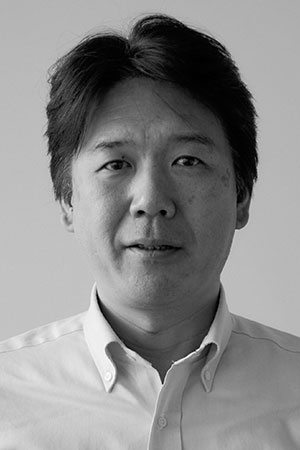
Senior General Manager
Business Unit 1
Digital Imaging Group
Imaging Products and Solutions Sector
Sony Corp.
Kenji Tanaka/Sony: As you know well, our key driver is the image sensor, and we already invested a lot of money for the image sensor development. And the sensor is a custom [design, meaning that] only Sony can use these sensors, and our strength is our in-house technology. So I invested in that and we will keep investing in the in-house technology like image sensors.
[An extended editorial note from Dave Etchells: This has been the subject of a *lot* of misinformation, misinterpretation and speculation on the 'web, so let me attempt to set the record straight...
This at first glance was new information for me; since as far as I had been aware, other manufacturers always eventually got access to the same sensors that were used in Sony cameras. Instead, Tanaka-san was saying that there would be some developments that were co-developed by Sony's camera division, and that those would of course remain proprietary.
(I'd initially said that I thought there was a time delay involved, between when Sony could use the most advanced sensors in their own cameras vs when competing camera makers had access to the tech, but they informed me that there was no public position to that effect, and particularly no timeline for that sort of thing. - I'd said that other makers got access to the most advanced sensors a year after the Sony camera engineers did, but there appears to be no such official timeline.)
What clearly seems to be the case, though, is that Sony camera engineers are able to work with Sony's sensor engineers, to develop unique system architectures that take advantage of their unique integration capabilities, when creating their own cameras.
It's important to note that this isn't in any way a matter of holding back "higher-quality" sensors to disadvantage competitors. When it comes to quantum efficiency and fundamental noise levels, we're up against fundamental physical limits, with all the manufacturers. The limiting factor in extremely high-ISO noise levels isn't an issue with the silicon or a particular fab process, it's the "shot noise" that results from random variations in how many photons arrive at each pixel in a given time. If Sony were to somehow dial back specs in the sensors they offer competing camera manufacturers, other sensor makers would rapidly step in to fill that gap.
Instead, Sony's advantage is that their camera engineers can collaborate directly with their sensor-engineering team, to jointly develop new system architectures that fully leverage their exceptional integration technology.
Completely apart from this conversation with Tanaka-san, I've long been aware that Sony has integration technology driven by the smartphone market, that goes well beyond commodity sensor tech in the camera space. In the camera world, it takes significant changes in system architecture to take advantage of this. We've recently seen Sony's collaborative advantage in this area with the A99 II and A6500. (Read my interview with Kimio Maki and Takashi Kondo from Photokina 2016, for more about their "front-end LSI" technology that's deployed in those cameras.)
Recently, Sony's gone well beyond what we saw in the A99 II and A6500, though, with an announcement of three levels of circuit-stacking in the smartphone sector, now incorporating massive amounts of DRAM directly integrated with the sensor chip and logic. In the small-sensor world, this now allows full-HD resolution video capture at 1,000 frames/second, and full-resolution still image capture at 19.3 million pixels per frame, at 120 fps. (The announcement linked above not only discloses 1,000 fps FHD recording, but also the ability to intelligently switch between normal recording and super slow-mo, when the sensor system detects rapid subject motion.)
So let's be clear: Sony isn't somehow holding back their "good" sensors for use in their own cameras; it's instead more about taking advantage of the fact that their camera and sensor engineers are able to collaborate with each other, developing new camera architectures that take advantage of their unique integration capabilities. This isn't news, it's just that current advances mean that overall system architecture plays a bigger role than it did in the past.]
DE: So Sony's invested billions of yen in sensors...
KT: Yes.
DE: ...that applies to many areas, and now for cameras, you can draw on that. So it's sort of like that investment has already been made or is being made, and you can draw on that and have proprietary sensors just for Sony's cameras.
KT: Mmm-hmm.
DE: Yes.
KT: And the sensor is one aspect. Another one is the lens, yeah? And the same as the sensor, we invested a lot of money for the development of our lenses. So the point is that we have a key technology, so we invest in-house. We don't just think to buy something [from another company].
DE: Mmm, mmm. You want to develop all of the capability in-house. So I would think that as a percentage of revenue, you probably spend more on development than most companies do?
KT: I think so...
DE: Maybe some of it is the direction in which you're allocating resources. I admit to being surprised that the enthusiast and pro section of the camera market is holding steady. And I'm not sure if that was units or revenue...
KT: Revenue.
DE: It was revenue, yeah. What do you think has been contributing to that strength in that segment?
KT: This is quite a difficult question. I think visualizing an attractive image is a kind of a human instinct, so that kind of instinct never disappears. So in the sense that the full-frame market is quite stable and never disappears, that is because many enthusiast wants to create something beautiful, something high quality. So that [full-frame market stability is thanks to] the human eye, human nature I think, you know?
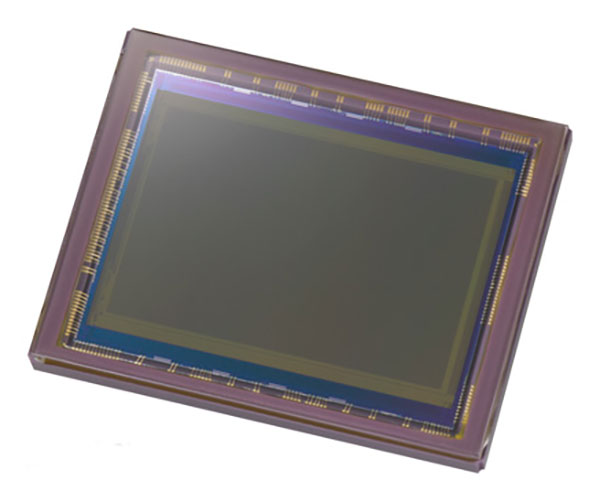
DE: Mmm. And so regardless of other technology, there's always people that have the personal passion for imaging. And then as you say, the full-frame is kind of the ultimate expression of that.
KT: Yeah.
DE: Do you think we will see growth in that segment, or is it just a certain percentage of society that is that way?
KT: I want to increase this segment, but you know, globally speaking I think that this segment is stable. If the segment increases, [it will do so] very slowly. In the US, we expect it to grow 10% this year.
DE: One thing that I see all of the manufacturers facing is that the biggest competitive problem isn't necessarily the other manufacturers, it's everybody's cameras that they've already made. I call it the sufficiency problem, meaning that for a lot of users, a three or four or five-year old camera is just fine.
KT: That is enough, yeah.
DE: And as the technology continues to advance, each new year's cameras are being that much more of a problem for the cameras that follow them. And so the answer's obviously to innovate even more, but what do you see as being the key area in which to innovate? You know, if people have a 24-megapixel camera, do they really need 50 megapixels, or if they have 24 frames per second do they really need 60 fps? You know, at some point you reach a level that it's OK, where people don't really need more in a given market segment.
KT: First of all, please think back to the 4K TV, yes? The initial attempt at the beginning, everybody said the HD, 1080 is OK. We don't need 4K. But right now, people want to have a 4K TV. So the demand looked mature, but technology [overrode it], overachieved the demand. But that kind of mindset change happens gradually. But if people look at the situation, some day will [be] today's 4K TV era. So kind of the same thing has happened to the ILC I think. Before 42 megapixels... nobody needed such a resolution...
DE: Ah, yeah.
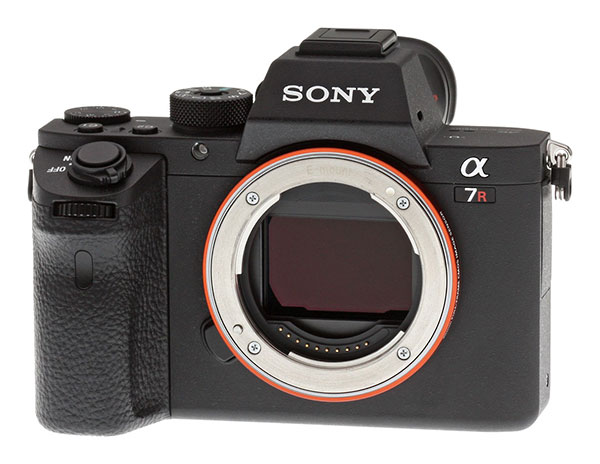
KT: ...but right now, people enjoy 42-megapixel cameras. So our mission is to envision new innovations, new experiences for the people. If the experience is beyond the users' imagination, they [will] want to have it.
DE: Mmm, mmm-hmm.
KT: So the point is how to go beyond the imagination.
DE: So where do you think the areas are that are ripe for innovation? We have 42-megapixel cameras, and people now think "Oh!", they would like to have 42 megapixel. But do we go to 100 megapixel, and then will people really want that? Or what are the other areas where there's an opportunity to exceed expectations and then create demand?
KT: Now we are focused on three essential factors. One is of course the resolution, and another is the sensitivity, and third is the speed. [For example] 20 frames per second and 30 frames per burst or 100 frames per second, everybody wants to [have] that kind of functionality, but I can't say yes. Because they don't know how to use this kind of technology, but if we can show the benefit for that, people [will] enjoy the new technology, I think.
DE: Mmm, yeah. So once people see 100 frames per second or 120 and slow motion or whatever, that that will create new demand for that.
KT: I'm talking about the professional sports shooter. For example they are shooting tennis or badminton, they are the kind of professional targeting the one millisecond [in time that they want to capture].
DE: Mmm.
KT: [That] basically means we need more frames per second continuous shooting.
DE: Mmm, yeah.
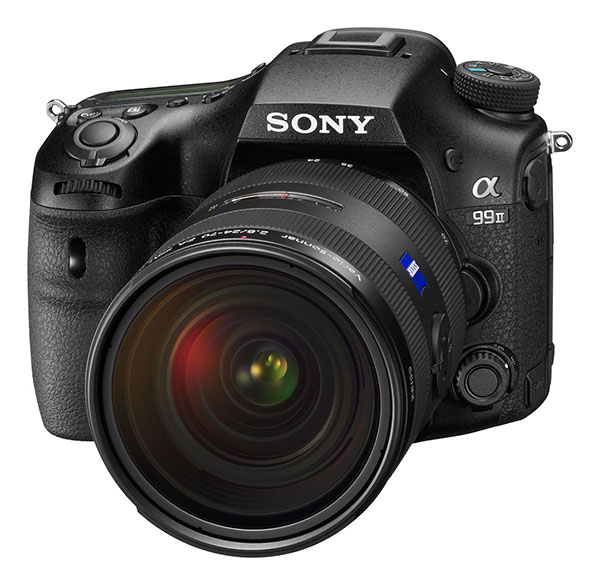
KT: So for that kind of performance, the hardware demands are very high. But some day, we can do that.
DE: Yeah, interesting. One area that seems very important to me is autofocus, and it feels like that's an area where there's still a lot of room to rise to meet not even expectations, just needs for consumers. But it's also extremely complex, and looking at it from our end it's very difficult to test. There are so many different scenarios that you might have, and so then it's, it's difficult to communicate actual progress that you make. You can say "This camera's better than our last one", but how do you communicate significant improvements in autofocus to consumers without it just being kind of empty branding, and giving it a new market name?
KT: First of all, I agree with your opinion that autofocus is very important, and we have room to improve this technology. And one classic area for potential improvement is speed. Another thing is how to integrate intelligence.
DE: Yeah, intelligence for subject recognition.
KT: Yeah, for example we already provide the eye focus function. That is one example of intelligence. Many customers find it difficult to focus because they want to focus on the eye, or focus on some other object, so we need to solve this complexity, we need to improve. So if we are to solve this very difficult problem, the image sensor is very important. Because Canon and Nikon have a separate AF sensor, that kind of structure cannot use intelligence. [With a] combined AF sensor and the image sensor, that kind of innovation can use the intelligence. So we're now developing that kind of a thing. So some day I think that if the user wants to focus on the hand, your eye, your computer, or... That kind of function.
DE: It's like object-recognition for the camera to be able to "see". Like I was just watching two boats going past on the river; my eyes have no problem realizing this is the boat on the back, and this is the one on the front.
KT: Because you are thinking.
DE: I'm thinking, exactly, yeah. And you mentioned with the sensor too, in the human visual system there are many layers of neurons that figure out, see different things. And so I've felt that intelligence is really the next big thing for computers. But very difficult, too. It takes a lot of very advanced processing, and it probably takes different sensor structures.
KT: Not only on autofocus, I think for example the autoexposure [could benefit from intelligence].
DE: Mmm, yes.
KT: With the intelligence we can create something new, but you know, many people say it happens from here, from image sensors, I think, yeah.
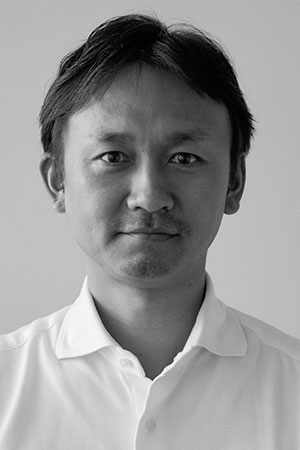
Senior Manager
Area Marketing Section 2, Department 1
Marketing Division
Digital Imaging Group
Imaging Products and Solutions Sector
Sony Corp.
Joe Asai/Sony: I think that Sony has been repeatedly saying about the advantage of mirrorless, is that not having a mirror, having direct information...
DE: Mmm, the fact that it's, it's all integrated immediately.
JA: Yes.
DE: Yeah. And one limitation early on was just to get the data off of the sensor quickly enough to be able to do autofocus cycles. But now with the stacked sensors and local memory and local processing, you can get the data through that quickly, so now you can realize the benefit of having the integration of distance and image information.
KT: You're right.
DE: I'm very excited, I think we're going to see some really interesting things, and you've hinted some that you're working on some very advanced things in that area. I think there's a lot of exciting things coming.
And so another big message we heard yesterday was that you don't see your goal as growing by taking a bigger share of the same pie, but rather by expanding the pie itself by drawing in new ILC photographers. And you showed some very impressive spikes in your market share, like when the A7R Mark II came out it was a big jump. But that's a very high-end model, it's not something that new people coming into the market would be buying. Do you have any stats on how many A7R II users were actually new to ILCs, or you view it more that sub-frame products, A6500, A5100, that kind of product are growing the market?
KT: In the case of our Alpha 7R Mark II, honestly speaking that spike comes from just a shift from the other ILC area.
DE: That's from other ILC products, yeah.
KT: So in that case, it's not growing the market, just a shift. So we are thinking how to invite the new customer into our market in a different way?
DE: Yeah. I have said, too, that amateurs, people who don't consider themselves photographers, like moms and dads, they need more advanced technology than the pros, because they're the ones who more than anything need smart cameras and intelligent sensors. So maybe that will come. Related to that, looking at the full-frame format we saw a lot of emphasis in the presentations on your strength in the full-frame market. I'm sure you don't intend to ignore the sub-frame market, but is full-frame where you really see the main focus of your efforts? Would that be a primary direction?
KT: Yes. Full-frame is our primary area. But as you said, we don't ignore the APS-C market, and we can also grow the APS-C market.
DE: Mmm, yeah, it seems APS-C is where you would be able to draw in new people, potentially.
KT: And especially the younger people, I think [they would] easily jump into the APS-C market.
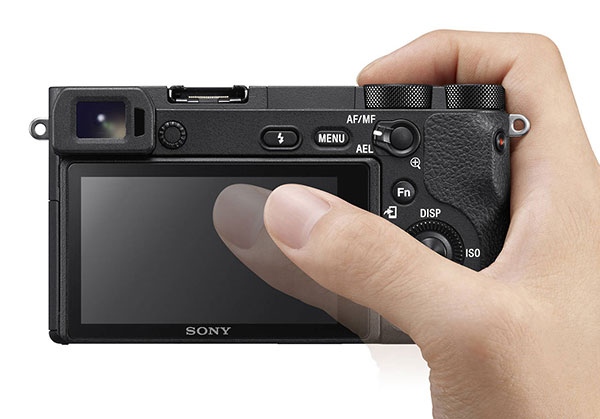
DE: I was surprised to learn that China and the US together account for more than 50% of the full-frame market, and I was astonished that China is actually twice the market size of the US. That's just amazing to me. Has that phenomenon of China accounting for so much of the full-frame market been something that developed recently, or have you seen that from the beginning of your entry into the market?
KT: I don't know Canon and Nikon's data, but in the case of Sony, these last three years, things changed.
DE: Hmm! Just in the last three years. So it used to be that the US was buying more full-frame, and now it's switched?
KT: Yes.
DE: Wow.
KT: And so after we launched the Alpha 7-series, I think things gradually changed, and of course [with the current] economic situation the Chinese people can [now afford to] buy valuable, full-frame cameras, so many factors are related to this phenomenon, I think.
DE: Yeah, yesterday Asai-san explained that within China, that consumers will actually consider a sub-frame A5100 or a full-frame A7R and ask "Which one should I buy?". That's really kind of amazing. So part of it is that the difference in price between them isn't an issue. As technology advances and full-frame prices come down, do you think we will start to see that kind of behavior in the US, where people will actually be actively considering a full-frame and an APS-C camera on an equal basis?
JA: Maybe not in the same way as we've been seeing in the Chinese market, because I still think that customers in America will probably want to know what they want first. I think value for money is on a higher concern amongst American customers, so I think buying behavior won't drastically change. I think it'll be stable but it probably won't grow rapidly from customers changing their purchase behavior. That's kind of my personal view on this.
DE: As sensor manufacturing becomes more and more efficient, will the cost difference between full-frame and APS-C decrease over time, do you think? I'm thinking that the percentage of cost that the sensor accounts for will decrease, and the mechanical construction is going to be a similar price [to what it is currently], so I'm wondering if we will see the cost of full-frame cameras approaching [those of sub-frame cameras]. What do you think the cost difference between the two different formats might be five years from now?
KT: For example, the mirror for the full-frame and the mirror for the APS-C, the cost is actually different, and other mechanical devices are totally different. But in the future if there's no mechanical parts, I think that the price could be getting close, that is the truth. But the customer is different.
DE: Mmm, mmm!
KT: So to satisfy the customer, many things like the body or durability could cost more on the full-frame camera, so that the customers' demand cost [will] still exist, I think.
DE: Mmm, there will always be some people who will want a sub-frame or that full-frame owners will want more rugged than APS-C.
We're coming to the end of our time together, and I want to give you a chance to stand on your soap box (that's an American phrase for having a prominent place in the public square, to talk to people). What's the one message that you would most like to communicate to Imaging Resource's enthusiast readers? What's the one thing you would want to tell them about Sony and about what you're doing?
KT: I want to show our technology. The technology can change the future. Right now, I think American people still think the DSLR structure with mirror and shutter is best. But the technology can change that kind of way. And I think only Sony can do it. So I want to explain why the future is changing. And sensor is one aspect, and the lens is another one. Of course, intelligence is another aspect, but there are many technologies we have, so these things I want to tell your users. And of course [by combining] these technologies we create new cameras. So I want to show you the new camera.
DE: Yeah, yeah. So people have an automatic assumption that a professional camera, a high-end camera, is an SLR. And your message is that, no, actually, in the future higher-end means mirrorless.
KT: Yeah. And I think a mirrorless can take a photo that the even professional DSLRs couldn't capture. So we want to give a new experience not only [for] the amateur [but also] the professional.
DE: A great summary. I see that we are exactly out of time, so I'll let you go to your next appointment. Thank you very much for spending the time to talk with me!
KT: Thank you!
JA: Thank you!